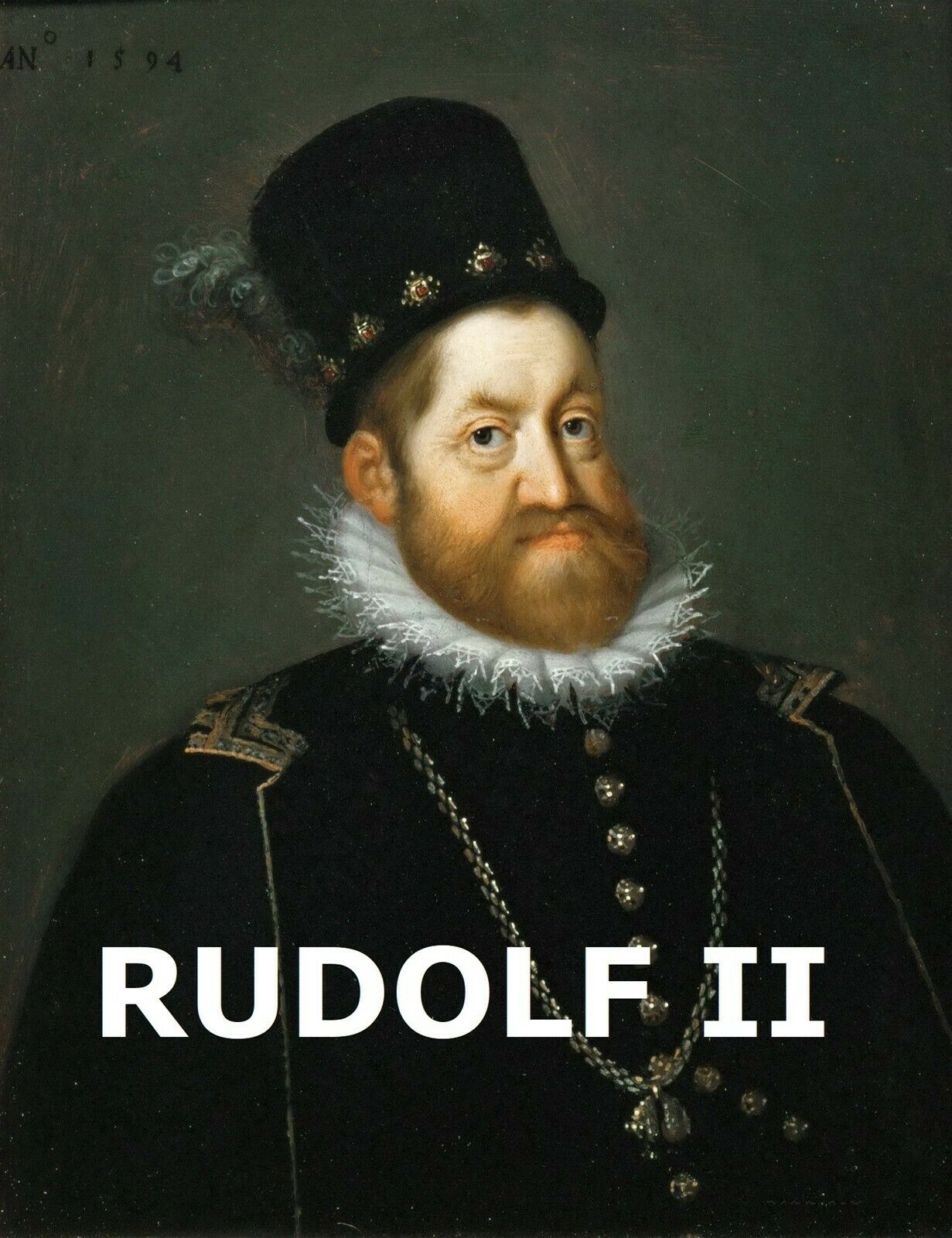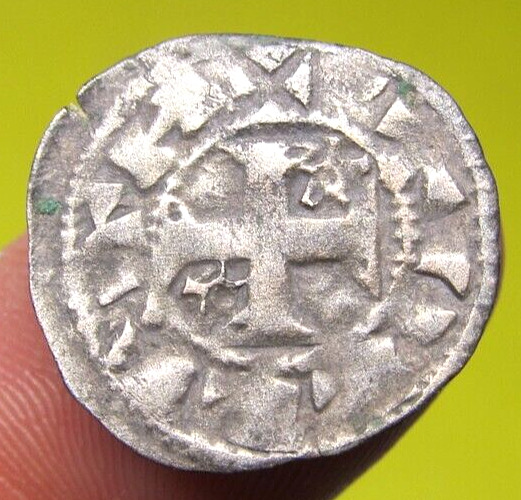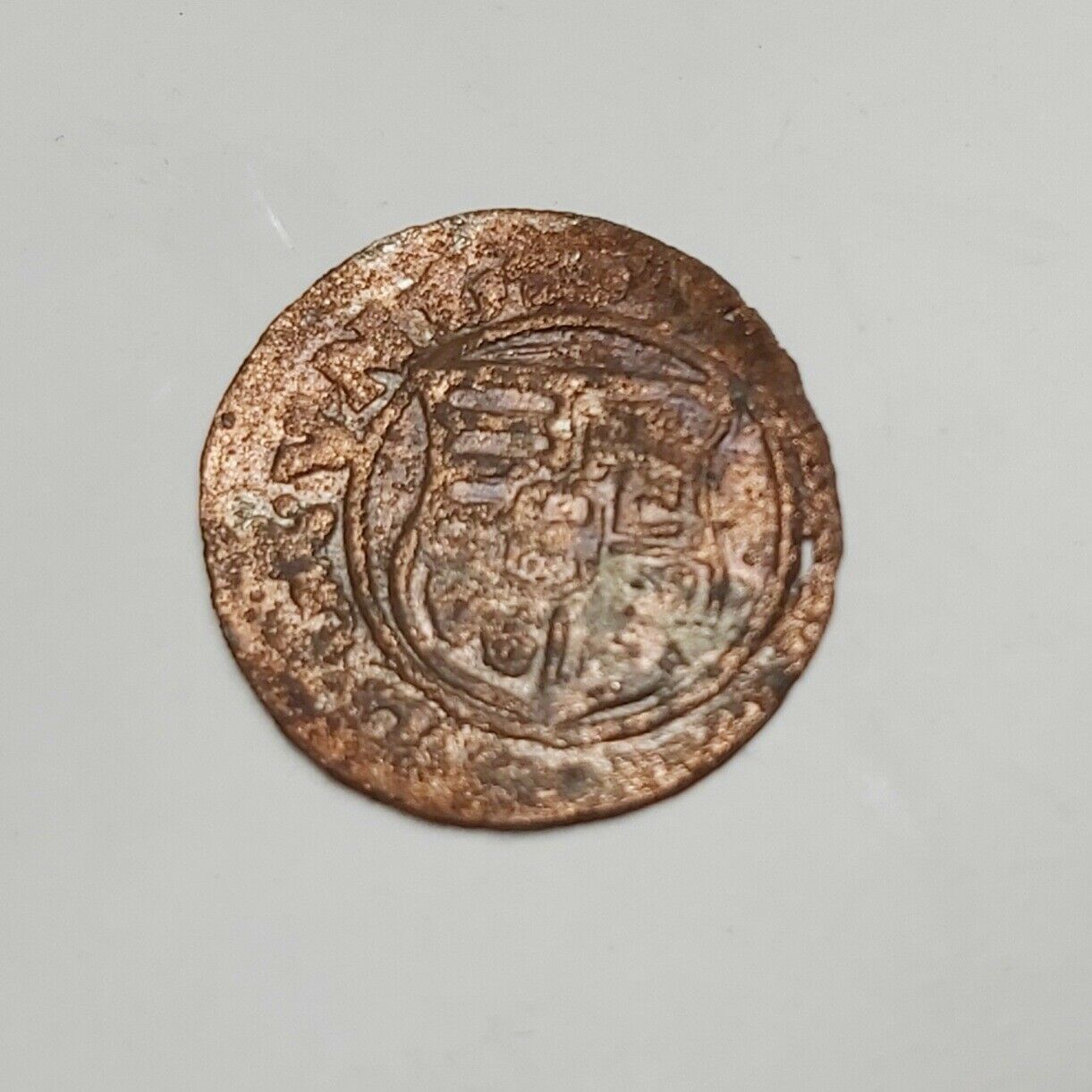-40%
RUDOLF II HUNGARY AR DENAR____Dated 1584 AD____Madonna/Child_____1ST DATED COINS
$ 3.95
- Description
- Size Guide
Description
17K66FRASCATIUS ANCIENTS
A BEAUTIFUL SILVER DENAR OF RUDOLF II KING OF HUNGARY & HOLY ROMAN EMPEROR FROM 1572 - 1608 AD .
DATED 1584
THESE SILVER DENAR TYPES OF HUNGARY WERE AMONG THE FIRST DATED COINS IN THE WORLD.
THE SIZE IS 16.0 MM AND 0.44 GRAMS.
OBVERSE – Curved, pointed fourfold Hungarian coat of arms: Hungarian Árpád stripes, Hungarian double cross, Dalmatian leopard heads, Bohemian lion; on the center chest shield: Austrian bonds. Lettering: VD•II•RO•I•S•AV•G•H•B•R• - Translation: Rudolf II, by the grace of God, Emperor of the Romans, forever Monarch, King of Germany, Hungary, Bohemia
REVERSE – Crowned Madonna, with child on her right divide mintmarks, date in the circular legend Lettering: PATR ¤ Date ¤ HVNG - Translation: Patroness of Hungary
KING RUDOLF II
Rudolf II, Holy Roman emperor from 1576 to 1612. His ill health and unpopularity prevented him from restraining the religious dissensions that eventually led to the Thirty Years’ War (1618–48).
The eldest surviving son of the emperor Maximilian II and Maria, who was the daughter of the emperor Charles V, Rudolf was crowned king of Hungary in 1572 (as Rudolf) and of Bohemia in 1575 (as Rudolf II). He succeeded his father as emperor and as archduke of Austria (as Rudolf V) on October 12, 1576.
Subject to fits of severe depression, Rudolf soon retired to Prague, where he lived in seclusion, dabbling in the arts and sciences. During the first 20 years of his rule disputes between Roman Catholic and Protestant factions crippled the political institutions of the empire. In Austria Rudolf reversed Maximilian II’s tolerant religious policy and sought to limit the political privileges of the Protestant Estates (the nobles and representatives of the towns).
The emperor’s mental instability grew worse after 1598, and in 1605 the Habsburg archdukes, long dissatisfied with his political incompetence, compelled him to entrust the conduct of Hungarian affairs to his brother Matthias. In 1606 they recognized Matthias as their head and as their candidate for Rudolf’s succession. Two years later Rudolf was forced to cede Hungary, Austria, and Moravia to Matthias and to promise him the succession in Bohemia. When mutinous imperial troops under the archduke Leopold ravaged Bohemia with Rudolf ’s support in 1611, the Bohemian Estates sought help from Matthias, whose army virtually held Rudolf prisoner in Prague until he yielded Bohemia to Matthias in May. Although Rudolf prevented Matthias’ preliminary election as king of the Romans (successor-designate to the empire), Matthias gained the imperial throne five months after Rudolf’s death.
ROYAL HUNGARY
Royal Hungary (1526–1699) was the name of the portion of the medieval Kingdom of Hungary where the Habsburgs were recognized as Kings of Hungary in the wake of the Ottoman victory at the Battle of Mohács (1526) and subsequent partition of the country.
Temporary territorial division between the rival rules (John I and Ferdinand I) occurred only in 1538 at Treaty of Nagyvárad, when the Habsburgs got the north and west parts of the country (Royal Hungary), with the new capital Pressburg (Pozsony, now Bratislava). John I secured the eastern part of the kingdom (known as Eastern Hungarian Kingdom). Habsburg monarchs needed the economic power of Hungary for the Ottoman wars. During the Ottoman wars the territory of former Kingdom of Hungary was reduced by around 70%; despite these enormous territorial and demographic losses, the smaller heavily war-torn Royal Hungary remained economically more important than Austria or Kingdom of Bohemia even by the end of 16th century.
Territory of present-day Slovakia and northwestern Transdanubia were constant parts of this polity while the control was often switched at region of northeastern Hungary between Royal Hungary and Principality of Transylvania. The central territories of the medieval Hungarian kingdom were annexed by the Ottoman Empire for 150 years.
The term "Royal Hungary" fell into disuse after 1699, and the Habsburg Kings referred to the newly enlarged country by the more formal term "Kingdom of Hungary".
A True Auction Environment –
Auctions start at $.99 with No Minimums and No Reserves.
FULL UNCONDITIONAL GUARANTEE OF AUTHENTICITY
If the buyer feels that the coin received is not as represented - just return the coin and the buyer will be fully reimbursed for the cost of the coin; the original shipping charge; and the cost to ship the coin back… No Questions Asked. If the buyer is not happy, please let me know, and I will do what I can to make it right.
NOTE: Frascatius is a life member (LM #6864) of the American Numismatic Association (ANA). Frascatius fully complies with the ANA Member Code of Ethics.
If you have any questions regarding this auction, please click on “Ask seller a question”.
I will be more than happy to provide you with a response.
VISIT MY EBAY STORE: FRASCATIUS ANCIENT COINS
For those new to ancient coins, please contact me, and I will e-mail to you my "Beginners Guide for Ancient Coin Collectors - FAQ" .
SHIPPING:
To the U.S. = .00 Insured Flat Rate
International = .50 Insured Flat Rate
Multiple items may be grouped at no additional charge at the above rates.
All items will be carefully packaged, protected & insured (private insurance).
Powered by SixBit's eCommerce Solution










